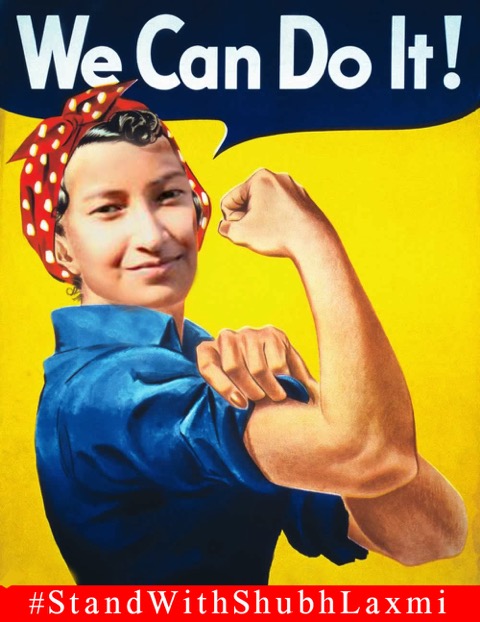As a girl in Assam raises her voice on the social media against eve teasing, she took on the role of the performer. But Berger pointed out, "In public nobody can escape from it; everyone is forced to be either spectator or performer.” And so the public took over the role of a performer.
Our friend Parvez Kabir, a promising art historian who unfortunately left this world at a very young age, was very much fascinated with John Berger in the beginning of his career, but later he pointed out some ambiguities in Berger’s ways of sayings, particularly when Berger talked about the history of art. What Parvez discovered (in an unpublished piece of paper) was that the language of Berger to be more of a fiction writer than of a historian. However, it is much said that Berger has completely changed the way we used to look at art with his Ways of Seeing. At the same time, Berger has changed the way of looking at an incident taking place in public too if one remembers the piece named Theatre of Indifference [Written in 1975, collected in The Sense of Sight, edited by Lloid Spencer, Vintage International, New York, 1985]. Even if we do agree with the arguments put by Parvez, we must also agree with the fact that – exactly there is a point of departure for an art historian, theoretician or academician towards being a public intellectual. A revisit to John Berger’s writings, thus, may reveal that alongside reclaiming the ways of seeing, Berger also constructed the ways of saying.
In the 1983 conversation he also stated, “This subjectivity (of a story) is a kind of amalgam: of three elements, of three people. The storyteller or the writer, the protagonist of the story, and their subjectivity, and lastly, the subjectivity of the listener. The story is already a cooperation between these three – which actually make the subjectivity of the story”.
Though Berger was not the only one to shift our focus from the logocentricism that always privileged the artist/ creator/ author to the spectator in the late twentieth century, he made the spectator much visible with the claim of the subjective spectator. In a conversation in The Seasons in Quincy with Susan Sontag, he said: “If I’m a storyteller it’s because I listen. For me, a storyteller is like a passeur who gets contraband across a frontier.” This conversation dismissed many things at a time. Firstly it reduced the power of the storyteller as the lonely creator, secondly it blurred the line between factual and the fantastic, and, thirdly it wiped out the conclusive method of storytelling. In the 1983 conversation he also stated, “This subjectivity (of a story) is a kind of amalgam: of three elements, of three people. The storyteller or the writer, the protagonist of the story, and their subjectivity, and lastly, the subjectivity of the listener. The story is already a cooperation between these three – which actually make the subjectivity of the story”. This shifting of subjectivity, or say it amalgamation, would help us looking at many facets in today’s world.
In the essay Theatre of Indifference narrating an experience of a visitor from a rural area to an urban space Berger says: “In public nobody can escape from it; Everyone is forced to be either spectator or performer. Some performers perform their refusal to perform. They play insignificant “little men”, or, if they are many they may play a cohort of “the silent majority”. The change-over from performer to spectator is almost instantaneous. It is also possible to be both at the same time…”.
This narrative immensely helped us to look at the art of performance. This also helped us to look at a happening at the public, as performance, if not as art.
Recently a young college girl named Shubh Laxmi from Jorhat district in Assam made a poetic but straight and hard-hitting confession about eve-teasing on Facebook and as it went viral the incident ushered a lot of discussion followed by a series of uprisings in Assam. The following series of events displayed a complex phenomenon, as after a point of time, it was not just a matter of an individual’s statement. The victim girl was a SFI activist, and thus the ruling party supporters accused the statement to be politically motivated. A number of people became unhappy to see politicising the matter and that the issue allegedly diverted from the central issue – which was for them to identify the culprits and punish. Counter arguments raised on this point that why one could not stand for the victim as a human being despite her SFI connection. A campaign started with a tagline #StandWithSubhLaxmi and several public gatherings, protest events and public awareness programs took place successively. Questions raised against the law and order, towards the leftist groups (claiming monitoring the aftermath of the incident), also against some representatives from the right wing ruling party for their sexist derogatory remarks instead of considering the seriousness of the issue like eve teasing and violence on women. Almost instantaneously, and collectively, a public opinion poll being generated across social media, electronic media and the public gatherings. Numerous women came forth to speak up their own experiences, their ‘untold stories’ of molestation and humiliation that they face every day in a patriarchal society. The phenomena is a never before one because women in Assam for the first time opened their mouth echoing the historical slogan- “the personal is political”.A number of people became unhappy to see politicising the matter and that the issue allegedly diverted from the central issue – which was for them to identify the culprits and punish. Counter arguments raised on this point that why one could not stand for the victim as a human being despite of her SFI connection.
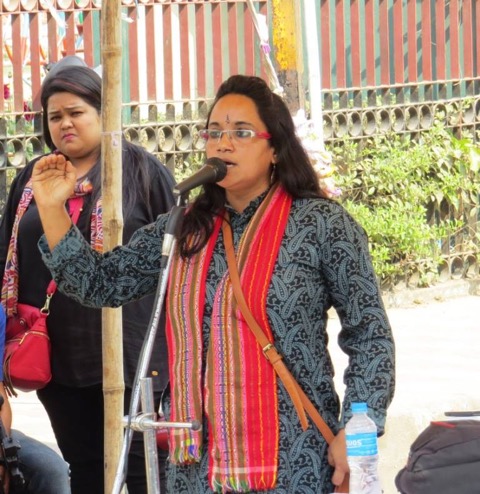
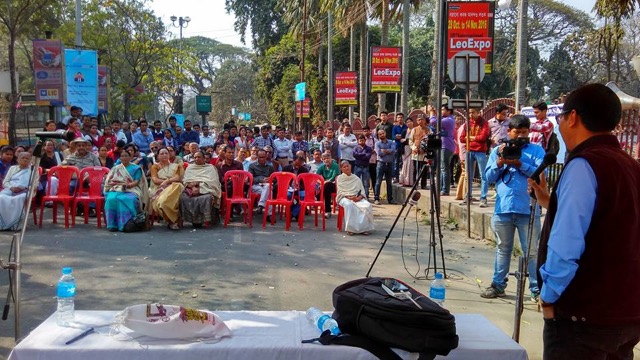
The series of events and facets made the name Shubh Laxmi an icon of bravery : one who dares to speak up against the violence caused in mundane everyday life. Gradually individuals, in the mercy of the social media, started speaking aloud leaving the baggage of fear and hesitation behind. An outburst for claiming the social space for women took place. Woman safety, empowerment or respect to women are the matters that hardly any person combats upon. Still when there is an uprising, many arguments grow up that disturb the movement. If one tries to look the entire matter as a performance then some interesting aspects would come up to our visibility.
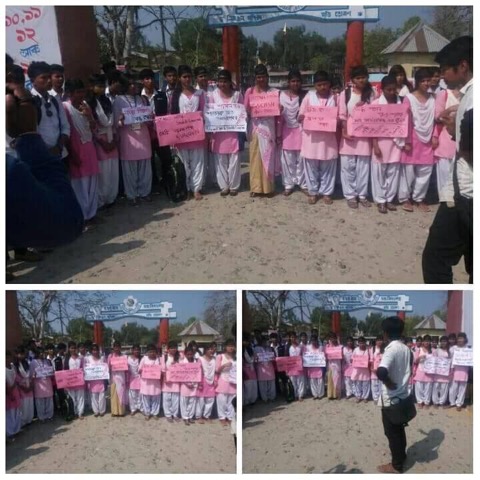
Bikers used to come in the evening following a girl and tried to forcefully touch her. The bikers were the initial performers. As the girl raised a voice in social media she took the role of the performer. Then the public took over the role of a performer. This public consists of everyone : some political agencies, self-claimed “non-political” agencies, active participators, introverts and shy ones looking the matters from a distance, the online onlooker of the viral discussions, the organizers of the rallies, the ones who posted on facebook the slogan #StandWithSubhLaxmi, the ones who ‘liked’ it re-shared it, the ones who just saw it but did nothing with it, the singularities, the pluralities – inclusive of all.
People from all sides failed to read and identify the trans-subjectivity in this story: a story with a complex subjectivity integrating the subjectivity of the girl, of the wrong-doer bikers, of the Police, of the state, of the ideology of the agency with whom the girl was identified, of societal norms and taboos, of media, of the regulatory customs that work upon a woman’s body, and of the discrete sense of the ‘public’.
The reaction towards Shubh Laxmi’s statement as a result of an unpremeditated impulse in public forum was understood. Pointing at the initiatives taken by the people beholding leftist ideology, the claim that it was not without an external stimulus – made by the people concerned with law and order was also understood. Claims like this were made against the girl: why did the girl confess it on social platform instead of going to the police? Why didn’t the girl note down the number of the bikes? Likewise, for the people organising public gatherings and propagating collective voice it was being asked: why people were bringing the event of eve-teasing or sexual harassment to such a larger platform instead of focusing on identifying and punishing the offenders? In between, a third category of opinion was being constructed with some self-claimed well-wishers of society. They claimed themselves apolitical, impartial and humanist. They were annoyed at the event being gradually larger and bothered at the increasing collective uprising. In this entire setup what missing was the understanding of a performative circumstance of the appearance and the anonymous sign of the public performance. People from all sides failed to read and identify the trans-subjectivity in this story: a story with a complex subjectivity integrating the subjectivity of the girl, of the wrong-doer bikers, of the Police, of the state, of the ideology of the agency with whom the girl was identified, of societal norms and taboos, of media, of the regulatory customs that work upon a woman’s body, and of the discrete sense of the ‘public’.
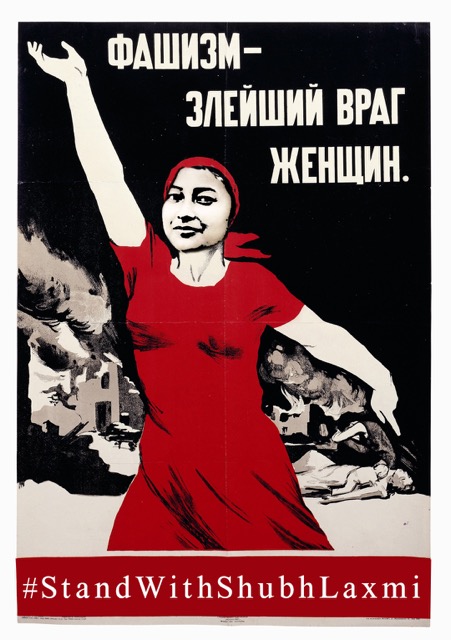
When a girl would have been harassed on a lonely street by some bikers in an evening, noting down the bike numbers would not be a priority for the victim, but to cope up with the sudden shock and fear, to get rid of the situation. And then, identifying the culprits and punishing them was no more a central issue at any cost. Personally I do not have any idea how punishment ever could navigate social justice. The idea of punishment alone could never control the crime if a certain kind of awareness in collective consciousness is not being articulated. The collective voice raised by numerous women identifying themselves with the experience and expression of Shubh Laxmi, the women coming forth to tell the ‘untold stories’ from their personal and private lives, the number of people agreeing on a point that women are not safe in mundane everyday life – these were all the achievements of this performative circumstance and the complex subjectivity. “Assam, along with the other north-east Indian states is a safer place for woman free from gendered violence”, this statement that was so prevalent for years appeared to be a false claim.

This time the name of the victim was not altered in the name of political correctness. This time the face of the victim was not censored and blurred. This time the victim was not mute, but vocal. Immediately after updating a status on her Facebook wall, the girl, the individual, named Shubh Laxmi no more lingered on the centre stage. She was iconified, became a representational element, by many, rightly. The performance must go on.















